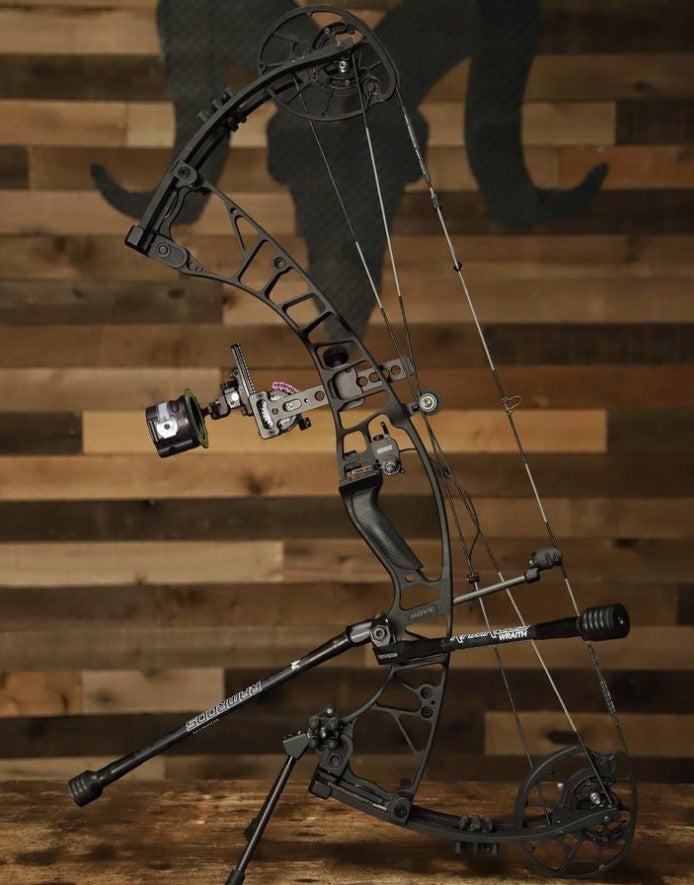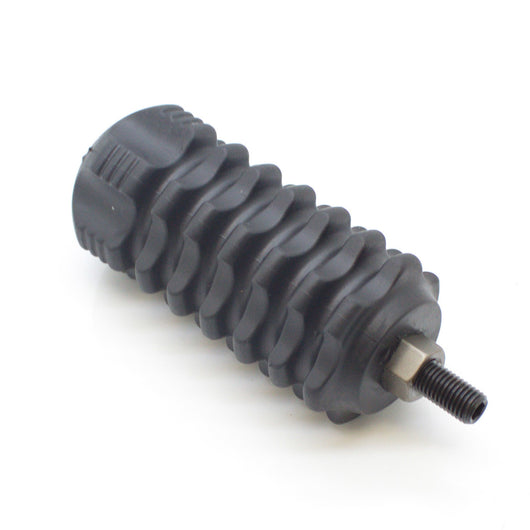The Ultimate Guide to Picking the Right Archery Stabilizer for Boosted Precision
Archery is a sport that requires precision and accuracy, and choosing the best equipment is essential for attaining ideal outcomes. Amongst the various devices offered, an archery stabilizer plays a significant function in enhancing accuracy. Nevertheless, with a lot of choices on the market, it can be frustrating to determine which stabilizer is the right fit for your needs. In this detailed overview, we will discover the key factors to think about when choosing an archery stabilizer for enhanced accuracy. From locating the optimum size to comprehending the various layouts and materials, we will certainly delve right into everything you need to recognize to make an informed choice. So, whether you are a seasoned archer seeking to upgrade your tools or a novice seeking guidance, join us on this journey as we unravel the tricks to selecting the perfect archery stabilizer.
Length: Discovering the Optimum Stabilizer Length
When choosing an archery stabilizer for ideal performance,Identifying the ideal stabilizer size is important. The length of a stabilizer directly impacts the balance, stability, and accuracy of the bow. A stabilizer that is too long can make the bow really feel top-heavy and challenging to manage, while a stabilizer that is also brief might not offer sufficient stability and dampening of vibrations. Locating the appropriate size requires thinking about aspects such as the archer's shooting style, bow weight, and personal preference.
A longer stabilizer, normally varying from 8 to 12 inches, can provide higher stability and minimize bow torque. This is especially helpful for archers who shoot with a high draw weight or those who have a propensity to torque the bow throughout the shot. The added size helps to disperse the weight evenly and counterbalance any torque or movement.
On the various other hand, a shorter stabilizer, typically between 4 to 7 inches, provides more maneuverability and quicker reaction. It is preferred by archers who shoot with a lower draw weight or those who require even more movement, such as hunters or 3D shooters. The shorter length permits simpler motion via tight rooms and faster changes.
Eventually, the optimum stabilizer size is an issue of personal preference and shooting design. It is advised to experiment with various sizes and observe the effects on security and precision. Consulting with skilled archers or professionals can also give useful insights and recommendations.
Weight: Determining the Appropriate Stabilizer Weight
After taking into consideration the ideal stabilizer size, the following important variable to consider when choosing an archery stabilizer is identifying the proper stabilizer weight - archery stabilizer. The weight of the stabilizer plays an important duty in improving precision and security throughout the shot
The weight of the stabilizer impacts the balance and control of the bow. A heavier stabilizer can offer raised security and control, specifically for shooters with a propensity for inconsistent shots or shaky hands. It aids to soak up the resonances and recoil generated by the bow, minimizing torque and reducing the impact on the arrow's flight.
On the other hand, a lighter stabilizer enables for a quicker and more receptive bow. It can be advantageous for shooters who prioritize ability to move and rate over stability. Lighter stabilizers also lower exhaustion during long shooting sessions or competitions.
To determine the suitable stabilizer weight for your demands, it is crucial to consider your shooting design, physical stamina, and bow setup. Explore different weights and observing the influence on your shooting efficiency is key to discovering the ideal equilibrium.
Eventually, the ideal stabilizer weight will vary for every specific archer. It is suggested to begin with a modest weight and make adjustments based upon personal choice and shooting outcomes. Remember, the goal is to achieve a stable and controlled shot, while also preserving convenience and ease of usage.
Materials: Picking the Right Materials for Longevity and Performance
When choosing an archery stabilizer, it is vital to thoroughly consider the materials used in its construction to guarantee resilience and maximize efficiency. The option of materials can significantly affect the total top quality and efficiency of the stabilizer.
Among one of the most typically made use of materials for stabilizers is carbon fiber. Carbon fiber uses a high strength-to-weight proportion, making it lightweight yet unbelievably strong. This product lowers and takes in resonances bow torque, leading to boosted security and accuracy. In addition, carbon fiber stabilizers are resistant to temperature level adjustments and are much less most likely to warp or bend over time.
An additional prominent material for stabilizers is aluminum. Light weight aluminum stabilizers are understood for their longevity and strength. They offer superb dampening abilities, minimizing the quantity of shock and vibration transferred to the shooter's hand. Light weight aluminum stabilizers additionally provide a variety of customization alternatives, permitting archers to adjust the weight and length to match their choices.
Some stabilizers are created using a mix of materials. For instance, a stabilizer might have a carbon fiber core wrapped in an aluminum shell. This crossbreed style combines the ideal top qualities of both materials, offering ideal security, longevity, and efficiency.
Layout: Comprehending the Various Stabilizer Styles and Their Impacts
Considering the materials utilized in archery stabilizers, it is very important to currently explore the different designs of stabilizers and their respective effects. The design of an more archery stabilizer plays an important duty in enhancing precision and minimizing resonance throughout the shot. There are a number of different styles available in the market, each with its very own distinct attributes.

An additional popular design is the side bar stabilizer. This design includes attaching a brief pole to the side of the bow, alongside the main long rod. Side bar stabilizers look at this site help in reversing the weight of accessories, such as quivers or sights, and provide additional stability to the bow.
Some stabilizers feature flexible weights. These stabilizers allow archers to tweak the balance and feel of their bows by adding or eliminating weights. This function is particularly helpful for archers that like a specific weight circulation or intend to experiment with different setups.
In addition, some stabilizers incorporate dampening modern technology to minimize vibration and sound. These stabilizers typically have integrated dampeners or utilize materials that soak up resonances, causing a smoother and quieter shot.

Devices: Checking Out Added Devices for Boosted Security
To further improve stability in archery, extra accessories can be utilized. These devices are designed to function in combination with the archery stabilizer to provide an also greater degree of security and accuracy. One such device is the Full Report V-bar or the side stabilizer mount. This device enables the accessory of a 2nd stabilizer, which assists to stabilize the bow and lower torque. By dispersing the weight evenly on both sides of the bow, the V-bar assists to decrease any kind of undesirable movement during the shot.
One more device that can enhance stability is a bow sling. A bow sling is a strap that affixes to the bow and permits the archer to keep a kicked back hold on the bow take care of without the fear of dropping it (archery stabilizer). This relaxed grip assists to reduce muscle tension and permits a much more steady and regular shot
In addition, a stabilizer weight system can be used to tweak the balance and stability of the bow. These weight systems commonly are composed of tiny weights that can be included or gotten rid of from the stabilizer to readjust the balance factor of the bow. By locating the optimal equilibrium point, archers can accomplish a more exact and stable shot.
Final Thought
To conclude, selecting the appropriate archery stabilizer involves taking into consideration variables such as length, weight, products, layout, and extra devices. The optimal stabilizer size and weight will depend on individual choices and shooting design. Picking sturdy products is crucial for long-lasting efficiency. Comprehending the various stabilizer layouts will certainly assist enhance precision. Checking out additional accessories can further boost stability throughout archery capturing.
Figuring out the optimal stabilizer size is vital when selecting an archery stabilizer for optimum performance. A stabilizer that is as well long can make the bow feel top-heavy and challenging to control, while a stabilizer that is also short may not give enough security and dampening of vibrations - archery stabilizer.Taking right into account the materials utilized in archery stabilizers, it is important to now delve into the various layouts of stabilizers and their particular results. Side bar stabilizers help in counterbalancing the weight of accessories, such as quivers or sights, and offer extra security to the bow
These weight systems usually consist of tiny weights that can be included or removed from the stabilizer to change the equilibrium factor of the bow.